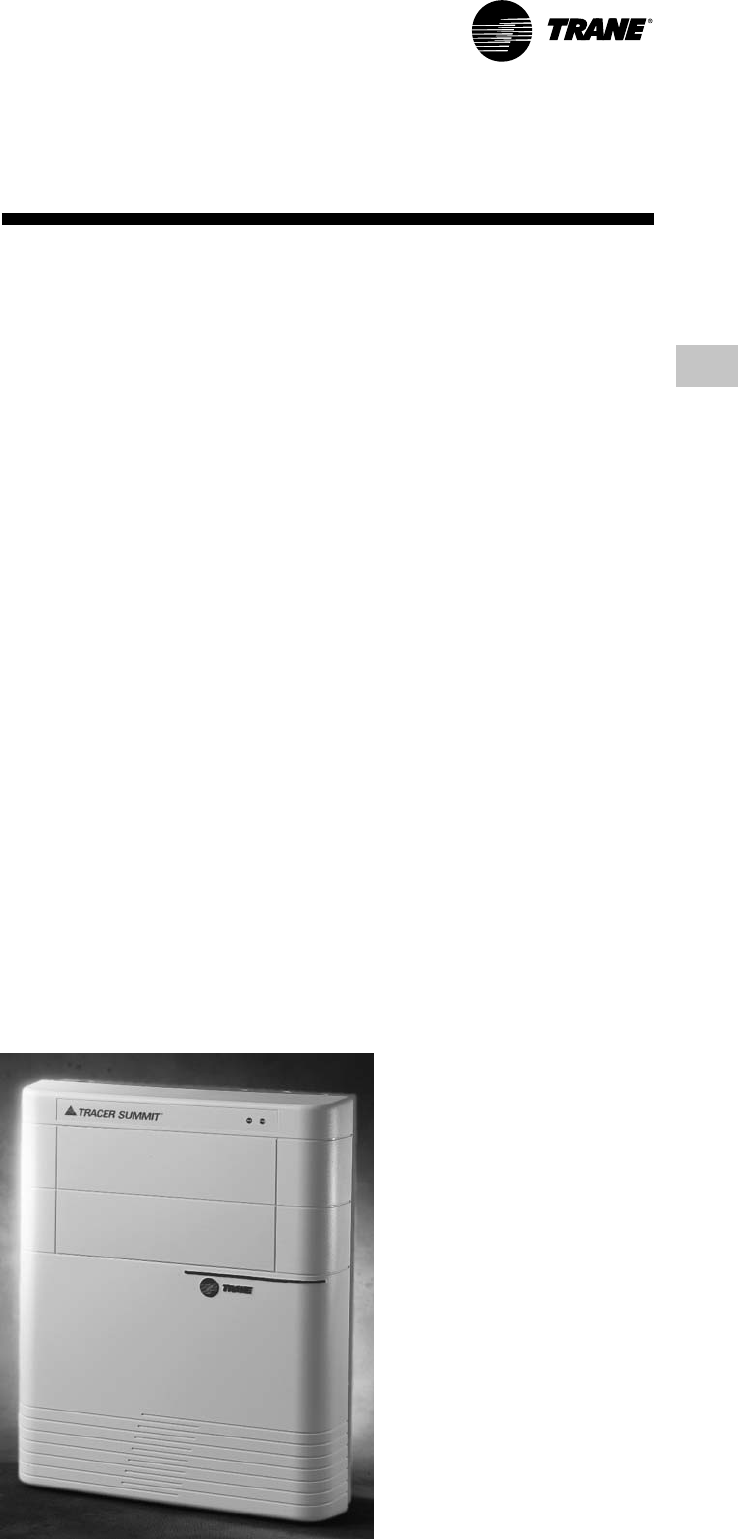
7
CTV-PRC001-GB
Features and
Benefits
Feedforward Adaptive
Control
The Tracer chiller controller allows the
system designer to explore energy
saving strategies and allows the
centrifugal chiller to be used in ways
that were never thought possible.
Feedforward Adaptive Control
Feedforward is an open-loop,
predictive control strategy designed to
anticipate and compensate for load
changes. It uses evaporator entering-
water temperature as an indication of
load change. This allows the controller
to respond faster and maintain stable
leaving-water temperatures.
Soft Loading
The chiller controller uses soft loading
except during manual operation. Large
adjustments due to load or setpoint
changes are made gradually,
preventing the compressor from
cycling unnecessarily. It does this by
internally filtering the setpoints to avoid
reaching the differential-to-stop or the
current limit. Soft loading applies to the
leaving chilled-water temperature and
current-limit setpoints.
Multi-Objective Limit Arbitration
There are many objectives that the
controller must meet, but it cannot
satisfy more than one objective at a
time. Typically, the controller’s primary
objective is to maintain the evaporator
leaving-water temperature.
Whenever the controller senses that it
can no longer meet its primary
objective without triggering a
protective shutdown, it focuses on the
most critical secondary objective.
When the secondary objective is no
longer critical, the controller reverts to
its primary objective.
Fast Restart
While the inlet guide vanes are closing,
the controller will allow the centrifugal
chiller to restart and going to a
postlube operational mode. If the
chiller shuts down on a nonlatching
diagnostic, the diagnostic has 30–60
seconds to clear itself and initiate a fast
restart. This includes momentary
power losses.
Building Automation and
Chiller Plant Control
For a preprogrammable and flexible
building automation and chiller plant
control, Trane has developed the Tracer
Summit
™
. It can control the operation
of the complete installation: chillers,
pumps, cooling towers, isolating
valves, air handlers and terminal units.
Trane can undertake full responsibility
for an optimized automation and
energy management for the entire
chiller plant.
The main functions are:
• Chiller sequencing: equalizes the
number of running hours of the
chillers. Different control strategies are
available depending on the
configuration of the installation.
• Control of the auxiliaries: includes
input/output modules to control the
operation of the various auxiliary
equipments (water pumps, valves,
cooling towers, etc.)
• Time of day scheduling: allows the
end user to define the occupancy
period, i.e. time of the day, holiday
periods and exception schedules.
• Optimization of the start/stop time of
the installation: based on the
programmed schedule of occupancy
and on the historical record of the
behavior of the temperatures,
calculates the optimal time of start
and stop of the installation to get the
best compromise between energy
savings and comfort of the occupants.
• Soft loading: the soft loading function
minimizes the number of chillers that
are operated to satisfy the building
morning pull down, thus preventing
an overshoot of the actual capacity
required. Unnecessary starts are
avoided and the peak current demand
is lowered.


















